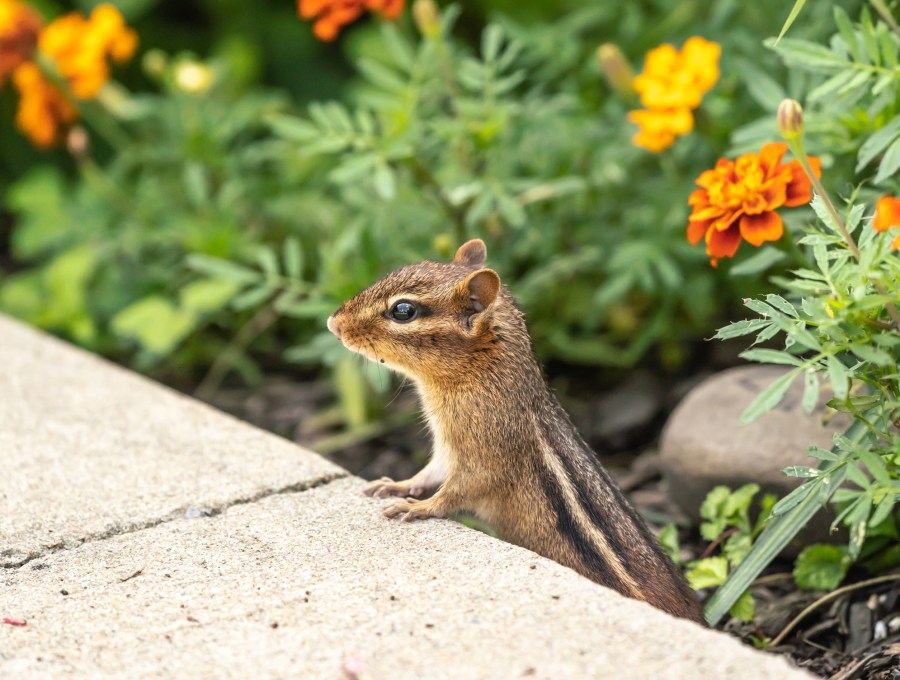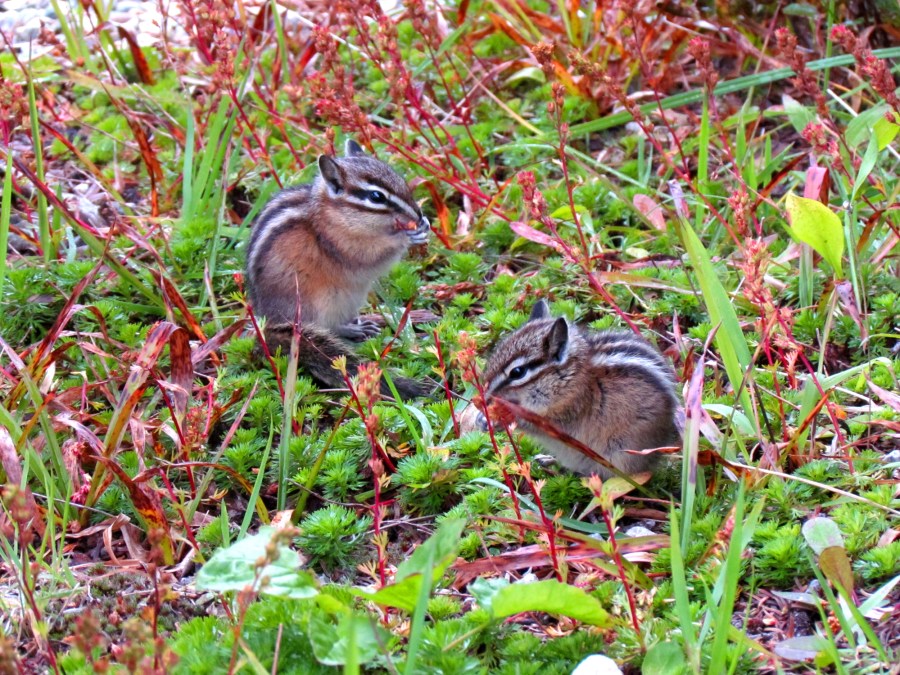Natural Pest Control: Eliminating Chipmunks From Your Garden

Like Alvin, Calvin, and Theodore chipmunks are adorable and mischievous little creatures. But they wander into “pest” territory once they start raiding your garden and destroying your plants.
Chipmunks live in burrows which they dig themselves. They’re omnivores, meaning that they eat both plants and animals. Chipmunks are not considered endangered or threatened, but their populations can be affected by deforestation and other human activities.
The squirrel-like rodents are territorial and also quite curious. If you happen to plant a new flower next to a squirrel’s territory, they sense that there is an invasion in their territory. Their curiosity prompts them to dig up the flower, and they’ll likely later feed on it.
How can we save that flower from being dug up, while also causing the least harm to the chipmunk population living around us? We’re offering some natural solutions to your chipmunk problem to try before you consider trapping them or hiring professionals to remove them.
Natural Chipmunk Repellents

When a chipmunk damages your garden, it’s likely due to a mix of territorialism, curiosity and their need to forage for food. Consider using natural methods that won’t hurt any of the critters but will simply repel them from your garden. There are several ways to do this:
Cayenne Pepper and Garlic

A mix of cayenne pepper and garlic is a natural chipmunk repellent, especially when used to guard tomato plants. Cayenne pepper contains capsaicin which has an unpleasant taste for rodents.
First, mix two tablespoons of cayenne pepper with two cloves of garlic and a quarter-liter of water. Place the mix in a sealed container and leave it for two days. After two days elapse, strain the mixture and pour it into a spray bottle.
Spray the liquid on your plants, targeting the leaves, stem, and fruit. It is best to coat your plants with the mixture once a week for its effectiveness. Suppose your garden receives a bucket down; it is best to reapply the mix since the rain would have washed it all away.
Add a Water Feature

On hot days, chipmunks may scavenge your garden for water. Rather than letting them pillage as they search, guide them to water by placing water in a clearly visible place, such as a birdbath. Be sure to place it away from your plants to prevent the critters from accessing your garden.
Use a Sprinkler

Generally, chipmunks don’t like water. Thunderstorms are a colossal scare for these rodents. You can use motion sensor sprinklers that turn on once they sense movement in your garden. The sprinklers ensure your garden never runs dry and keep it safe from these tiny pests.
Make Bird Food Less Accessible

Bird food is a tasty snack for chipmunks. Placing it on the ground is an open invite for chipmunks to invade your space. It is best to put it off the ground, making it inaccessible for the critters. Ideally, a standard bird feeder should be 5 feet from the ground and about 10 feet away from fence structures, shrubs, or trees.
Also, you can add a little pepper which the birds won’t mind, but it will repel chipmunks. Furthermore, cleaning up bird seeds that fall to the ground is advisable to avoid leaving a trail for the critters.
Install a Barricade

Upgrading your defense is your best bet in eliminating chipmunks from your garden. A barrier made of hardware cloth or mesh fencing can deter these tiny rodents from destroying your garden.
You can also install a gravel border instead of using box shrubs. The gravel border will mask your garden’s scent and make it difficult for chipmunks to access your precious plants. You can place a mesh wire around the plants for specific plant protection.
Install an Owl Box

An alternative natural way to exterminate chipmunks is through using owls. Owls feed on chipmunks and other small rodents. Installing an owl box in your yard will draw in these wide-eyed birds that will deter chipmunks.
Use Ultrasonic Pest Repeller

Instead of killing chipmunks, another humane way of ridding them from your garden is through ultrasonic devices. The devices emit low soundwaves, which irritates the critters. Additionally, the soundwaves are out of human hearing. Therefore you can use them in a residential setup. Some devices have continuous or motion-sensor operation modes making them more effective in scaring away the rodents.
Use Toxic Plants

Another natural way to deter chipmunks from your garden is by including toxic plants in your garden. Toxic plants are plants that chipmunks dislike and repel the critters. Generally, plants with bulbs will draw chipmunks away. A good example is onions. The pungent onion smell discourages and removes chipmunks from your garden and flower pots.
However, onions are toxic for cats and dogs and can also be effective in keeping them away from your garden.
Should You Trap and Relocate Your Chipmunks?

Trapping and relocating can seem like a good solution. The chipmunk gets to make a new home somewhere where it won’t be considered a nuisance. And you get your garden veggies back. However, trapping and relocating is rarely a humane choice for an animal like a chipmunk (or a squirrel, groundhog, etc). When released into a new environment, the chipmunk is likely to be stunned, won’t know where to look for food or water or escape from predators, and may begin desperately searching for babies left behind. Most animals don’t survive relocation.
However, if you do opt to use traps, consider the time of year and environment to which you’re relocating the animal. A squirrel trapped and released in the spring, for example, has a greater survival chance than one that’s taken from its home in winter, when it depends on its cache of nuts to survive.
Cage traps are the most commonly used traps for catching chipmunks. To lure chipmunks into the traps, you can use baits such as raisins, sunflower, or pumpkin seeds. In case you are wondering where to buy chipmunk cage traps, you can buy one from your local hardware store, pest control companies, or department stores. Alternatively, you can rent a cage from an animal shelter.
These essential tips can help you lay your next chipmunk trap:
- Apply bait to the trigger plate to lure chipmunks into the trap.
- Choose an appropriate cage trap. This one can be 10 to 20 inches long. Ensure the trap is closed on one end to prevent the chipmunk from escaping.
- Periodically check the trap for chipmunks. If you trap one, release it far away from your home. You can then place the trap in a different location.
- Place the trap in areas the chipmunks frequent the most. Look out for burrows and place the trap close. Avoid exposing the trap. It is best to conceal it or set it undercover.
When to Call For Help

If the above methods fail to work for you, consider hiring a professional chipmunk exterminator to rid the rodents for you. A quick search on the internet will show you the best pest exterminators available in your area.
Consider Cohabitation
You may have read elsewhere that that many deterrents won’t actually convince chipmunks to leave. For many, this is true. And as you now know, alternative methods that claim to be humane often result in the death of these cute critters. One final solution follows the old saying “if you can’t beat ‘em, join ‘em.” We love the guy who made a spare garden (and picnic table) for the family of groundhogs living on his property. A chipmunk garden and picnic table could be even smaller and cuter.





